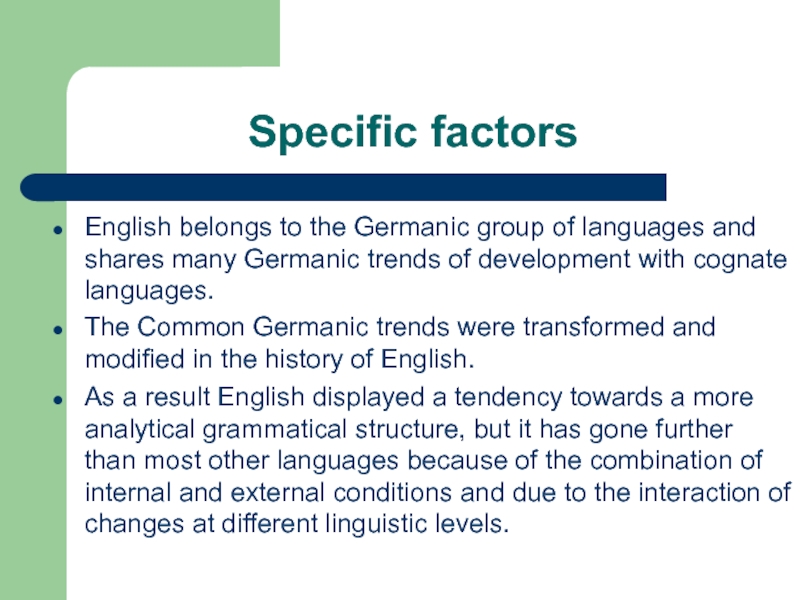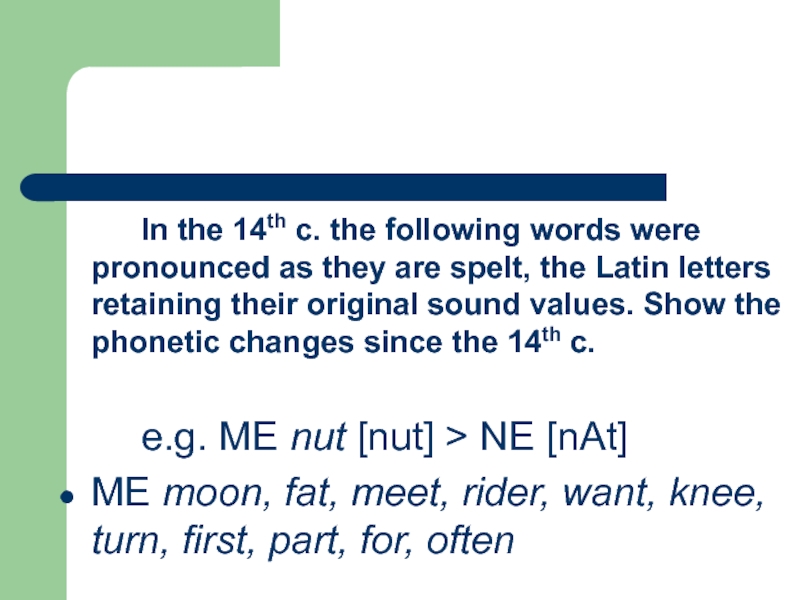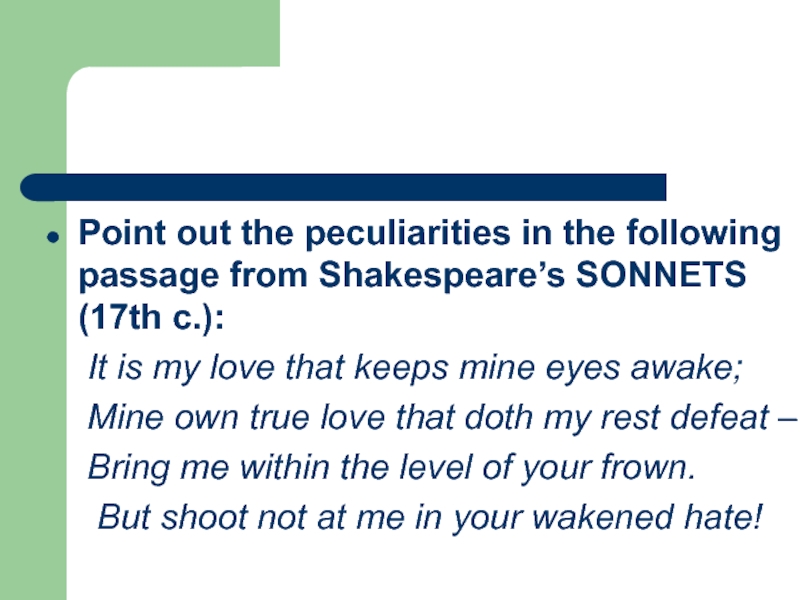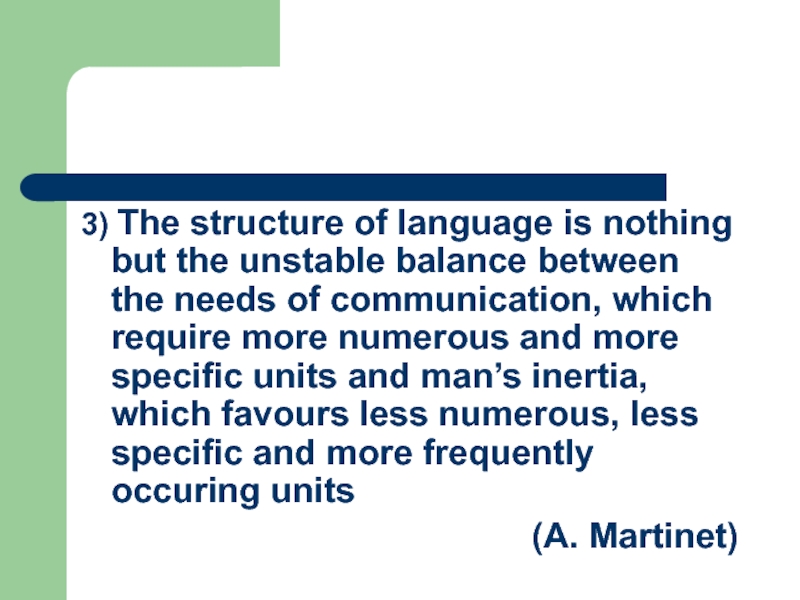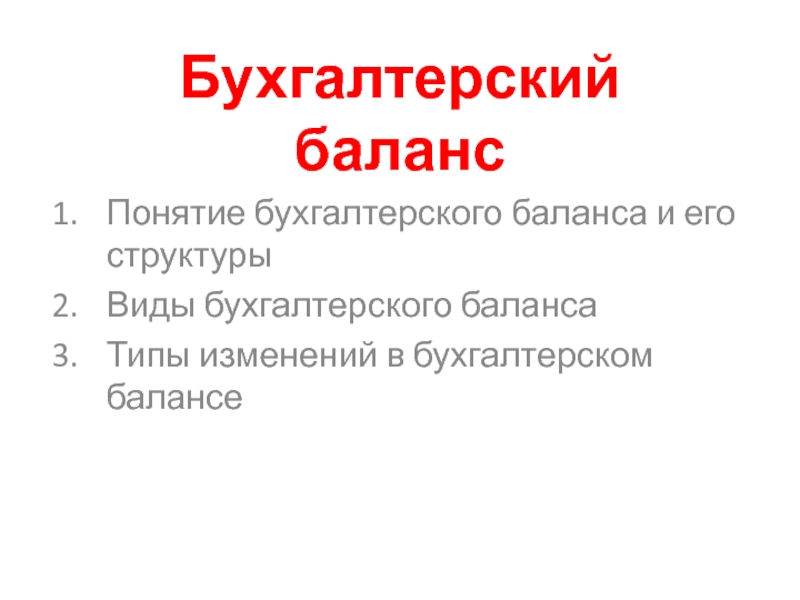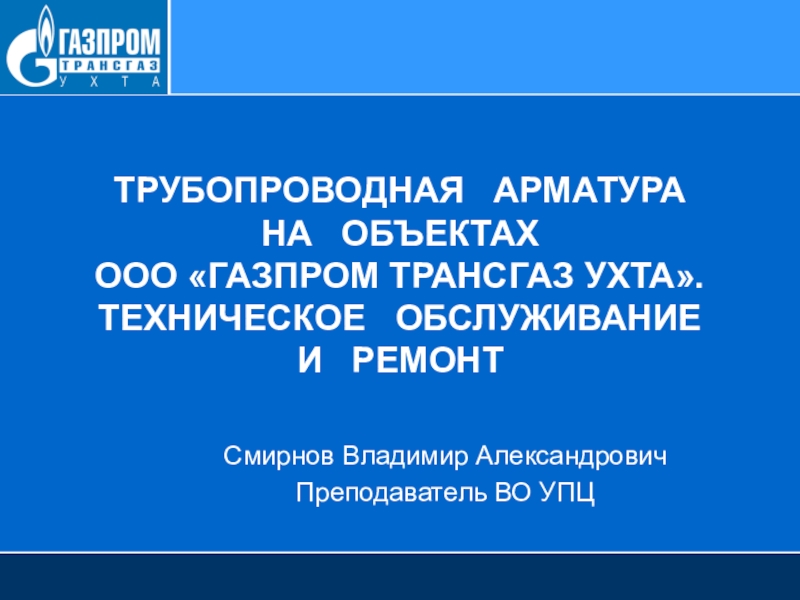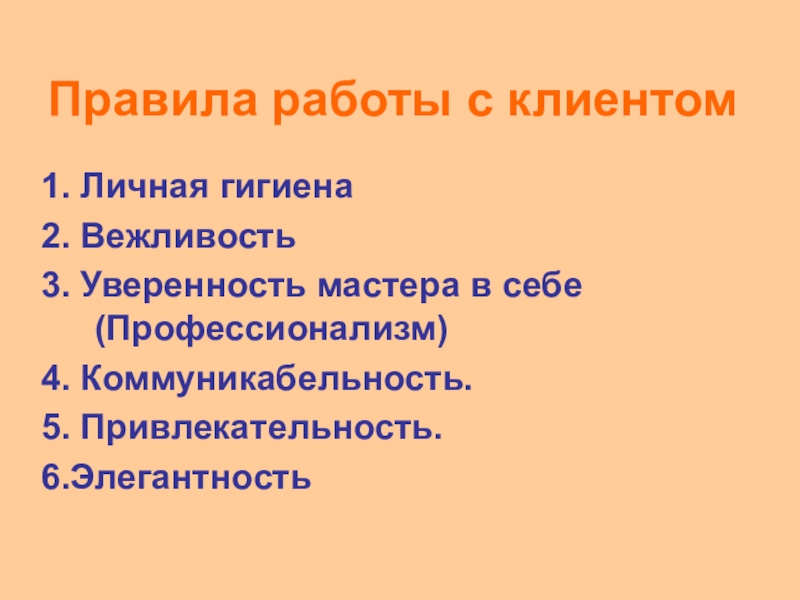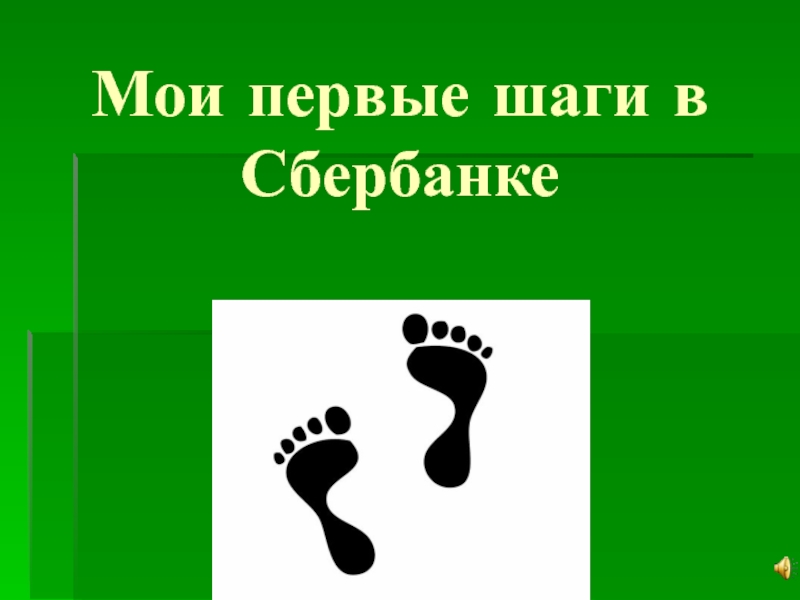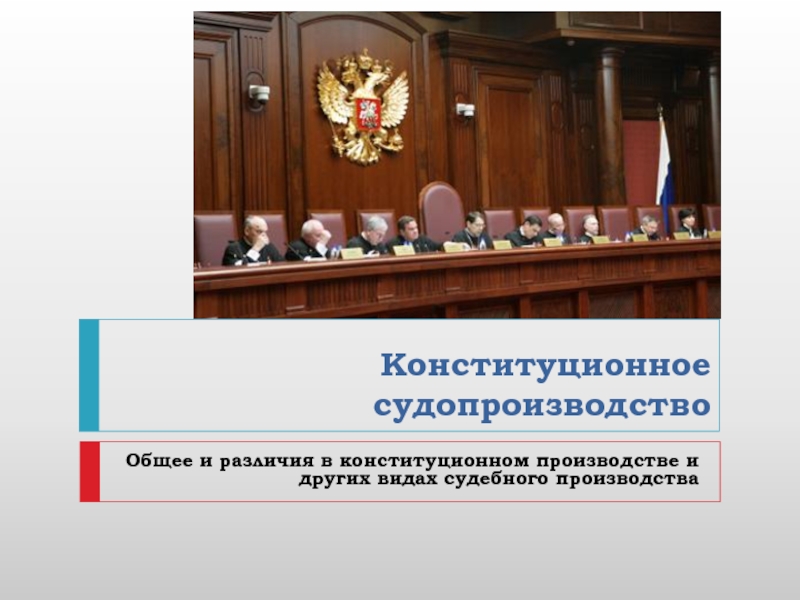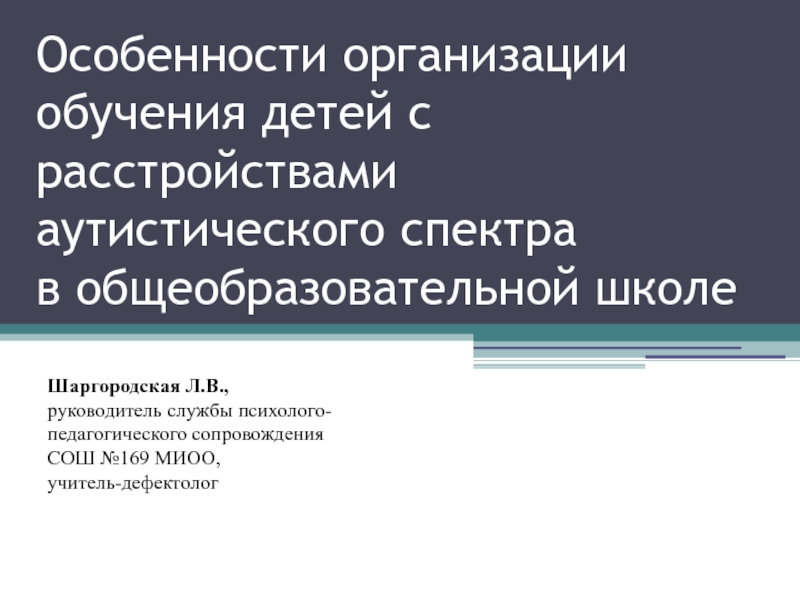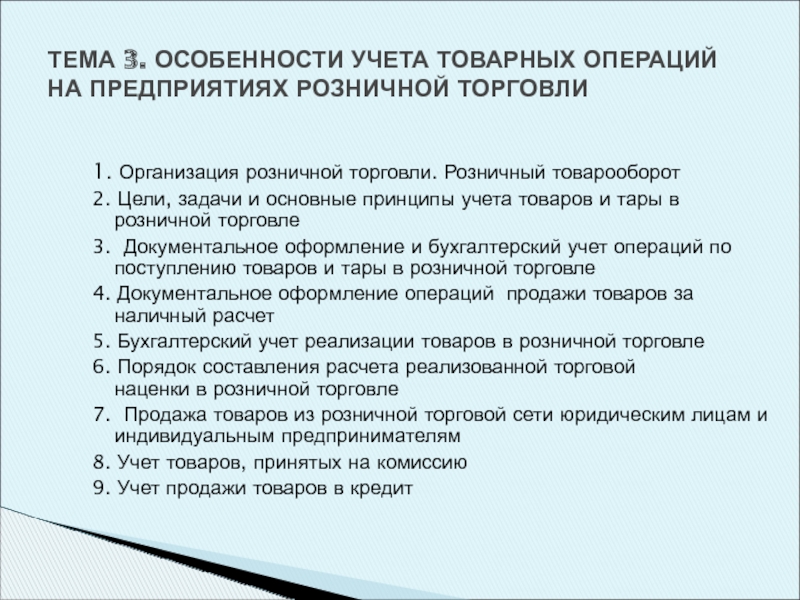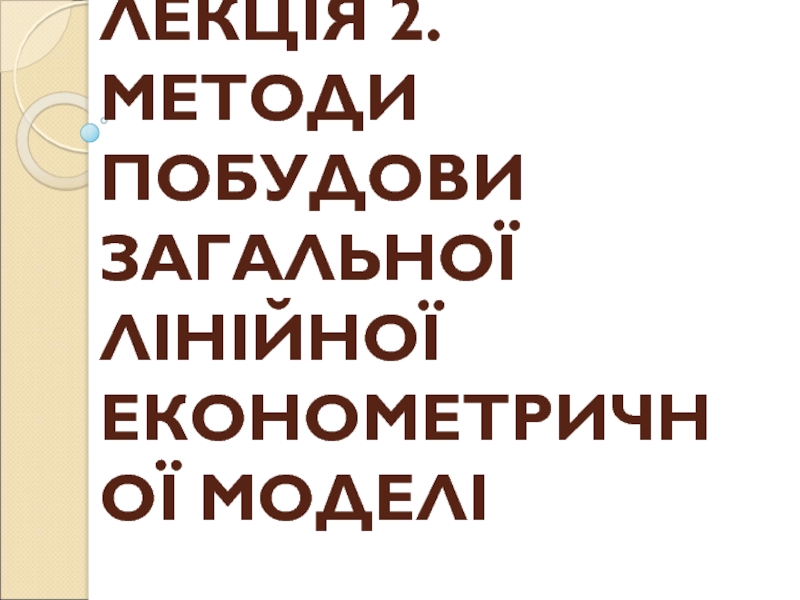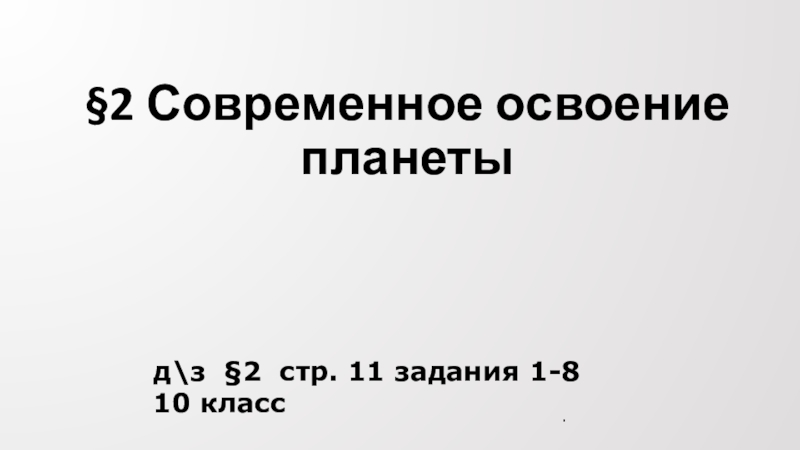Слайд 1THEORETICAL ASPECTS
OF LANGUAGE HISTORY
Слайд 2
The evolution of the language includes the internal or structural
development and “external” history of the language
Internal linguistic changes
are changes at the:
phonetic and phonological levels (historical phonetics (phonology))
morphological level (historical morphology)
syntactic level (historical syntax)
lexical level (historical lexicology)
Слайд 3Interdependence of changes at different linguistic levels
The history of noun
morphology = simplification:
nouns have lost most of their cases (OE
– 4, NE - 2).
Phonetic weakening of final syllables
Analogical levelling of forms at the morphological level
Stabilisation of word order at the level of syntax
OE sunu > ME sune (also spelt sone) > NE son
Слайд 4The external history of the language embraces a number of
issues:
the spread of the language in geographical and social
space
the differentiation of language into functional varieties (geographical variants, dialects, standard and sub-standard forms, etc.)
contacts with other languages
Слайд 5The concept of language space – i.e. the geographical and
social space occupied by the language.
The concept of linguistic situation
– embraces the functional differentiation of language and the relationships between the functional varieties.
Слайд 6Statics and Dynamics in Language History
There are certain permanent universal
properties in all languages at any period of time
e.g.the division
of sounds into vowels and consonants;
the distinction between the main parts of speech and parts of the sentence.
English has many stable characteristics which have proved almost immune to the impact of time
e.g. some parts of the vocabulary have been preserved through ages: most pronouns, form-words, words denoting basic concepts of life
Слайд 7Statics and Dynamics in Language History
e.g. many ways of
word-formation have remained historically stable.
e.g. grammatical categories
number in nouns, degrees
of comparison in adjectives have suffered little alteration,
case or gender have undergone profound changes.
Statics and dynamics can be found both in synchrony and in diachrony.
Dynamics in diachrony = linguistic change
Слайд 8CONCEPT OF LINGUISTIC CHANGE
3 main types of difference in
language: geographical, social, temporal.
Linguistic changes imply temporal differences.
Linguistic changes are
transformations of the same units in time which can be registered as distinct steps in their evolution.
ME
NE
to find - fundon [fundon] - founden [fHnden]- found
(the Past tense pl of the Ind. Mood) - (Past pl of the Subj. and Part.II) - (the 3 forms had fallen together)
These changes are defined as structural or intralinguistic:
phonetic and spelling changes,
phonetic and morphological changes,
morphological changes in the place of the form in the verb paradigm and its grammatical meaning (it stands now both for the sing and pl since these forms are not distinguished in the Past tense)
Слайд 10Replacements are linguistic changes, which involve some kind of substitution.
Types
of replacements
One-to-one replacement
but [u] > [A], feet [e:] >
[J]; OE ēa > French river
Merging or mergers
the Modern Common case of nouns is the result of the merging of the three OE cases – Nom., Gen., Acc.)
Splitting or split
the consonant [k] has split into [k] and [C]
kin, keep vs chin, child
Слайд 12HISTORICAL CHANGES
A change is historical if it can be
shown as a phonetic modification of an earlier form.
e.g. the
modern plural ending of nouns -es has descended directly from its prototype, OE -as due to phonetic reduction and loss of the vowel (OE stān-as vs. NE ston-es)
Both the change and the resulting form are called historical
ANALOGICAL CHANGES
An analogical form does not develop directly from its prototype; it appears on the analogy of other forms, similar in meaning and shape.
e.g. when the plural ending -es
began to be added to nouns which had never taken -as – but had used other endings: -u, -an, -a, - it was a change by analogy or an instance of analogical levelling. This analogical change gave rise to new forms referred to as “analogical” (OE nam-an > NE nam-es)
Слайд 13Rate of Linguistic Changes
slow and gradual
is restricted by the communicative
function of the language
different levels of the language develop at
different rates
Слайд 14 Lexical level – rapid changes, easy to observe
Phonetic level
– changes can not be sudden or rapid since the
system of phonemes must preserve the oppositions between the phonemes required for the distinction of morphemes
Grammatical system is very slow to change. As the most abstract level it must provide stable formal devices for arranging words into classes and for connecting them into phrases and sentences.
Слайд 15Mechanism of Change.
Role of Synchronic variation
A linguistic change begins
with synchronic variation (formal and semantic).
Synchronic variation is found in
every language at every stage of its history.
It is caused by functional differentiation and tendencies of historical development.
New features, which appear as instances of synchronic variation, represent dynamics in synchrony and arise in conformity with productive historical trends
Слайд 17Causes of Language Evolution
Extralinguistic
Events in the history of
the people relevant to the development of the language:
structure of
the society;
expansion over new geographical areas;
migrations;
mixtures and separation of tribes;
political and economic unity or disunity;
contacts with other nations;
the progress of culture and literature
Intra-linguistic
General factors or regularities
(operate in all languages as inherent properties of any language system)
Specific factors (operate in one language or in a group of related languages at a certain period of time )
Слайд 18General factors or regularities
assimilative and simplifying phonetic changes
[kn] > [n] in know, knee
[t] was missed
out in often, listen
Слайд 19Specific factors
English belongs to the Germanic group of languages and
shares many Germanic trends of development with cognate languages.
The Common
Germanic trends were transformed and modified in the history of English.
As a result English displayed a tendency towards a more analytical grammatical structure, but it has gone further than most other languages because of the combination of internal and external conditions and due to the interaction of changes at different linguistic levels.
Слайд 20
In the 14th c. the following words were pronounced as
they are spelt, the Latin letters retaining their original sound
values. Show the phonetic changes since the 14th c.
e.g. ME nut [nut] > NE [nAt]
ME moon, fat, meet, rider, want, knee, turn, first, part, for, often
Слайд 21Point out the peculiarities in the following passage from Shakespeare’s
SONNETS (17th c.):
It is my love that keeps
mine eyes awake;
Mine own true love that doth my rest defeat –
Bring me within the level of your frown.
But shoot not at me in your wakened hate!
Слайд 221) A linguistic change is a synchronic fact (A. Sommerfelt)
2) Visible change is the tip of an iceberg.
Every alteration that eventually establishes itself, had to exist formerly as a choice. This means that the seedbed for variation in time is simply the whole landscape of variation in space
(D. Bolinger)
Слайд 233) The structure of language is nothing but the unstable
balance between the needs of communication, which require more numerous
and more specific units and man’s inertia, which favours less numerous, less specific and more frequently occuring units
(A. Martinet)
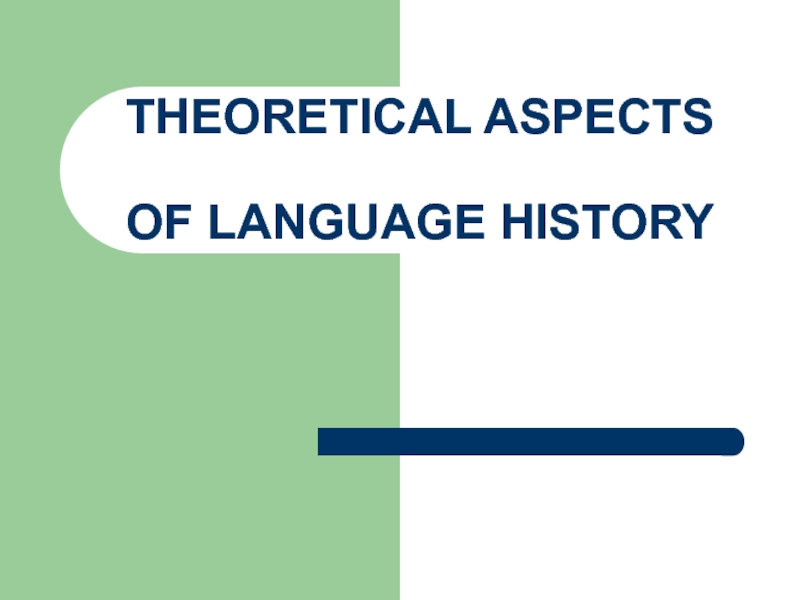
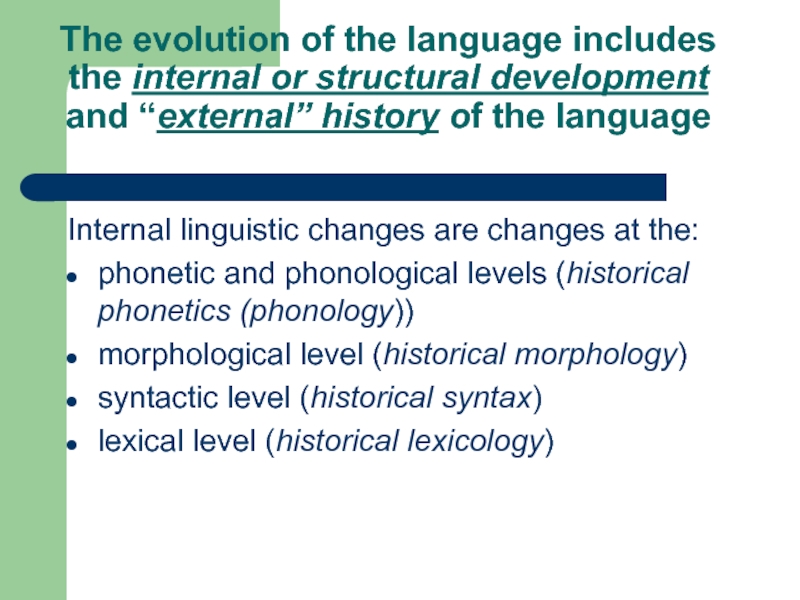
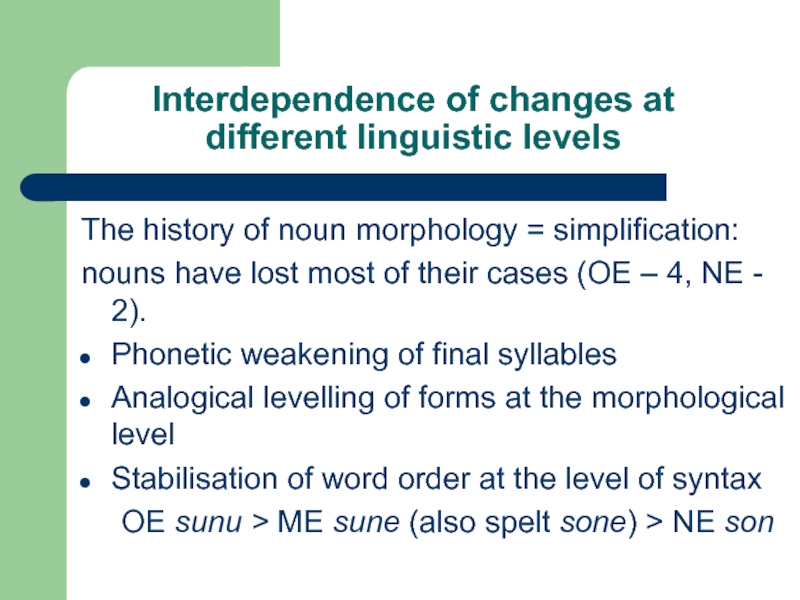
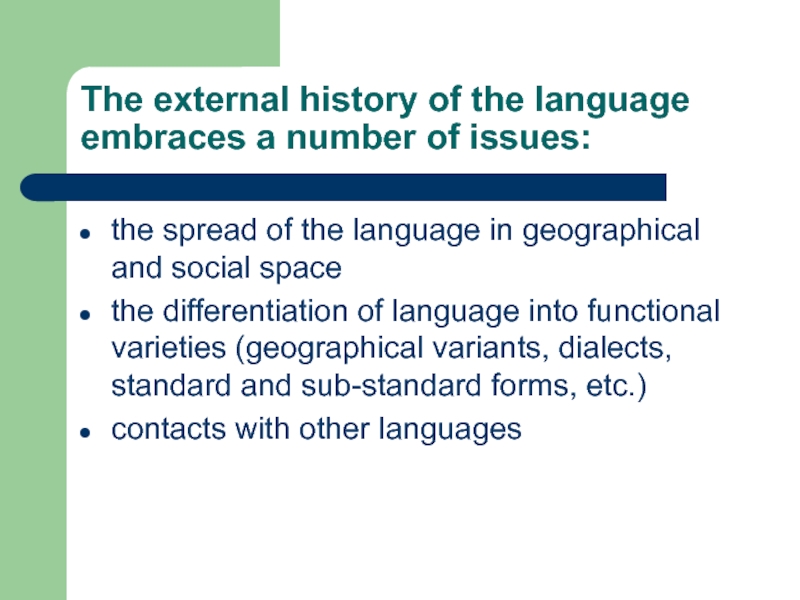
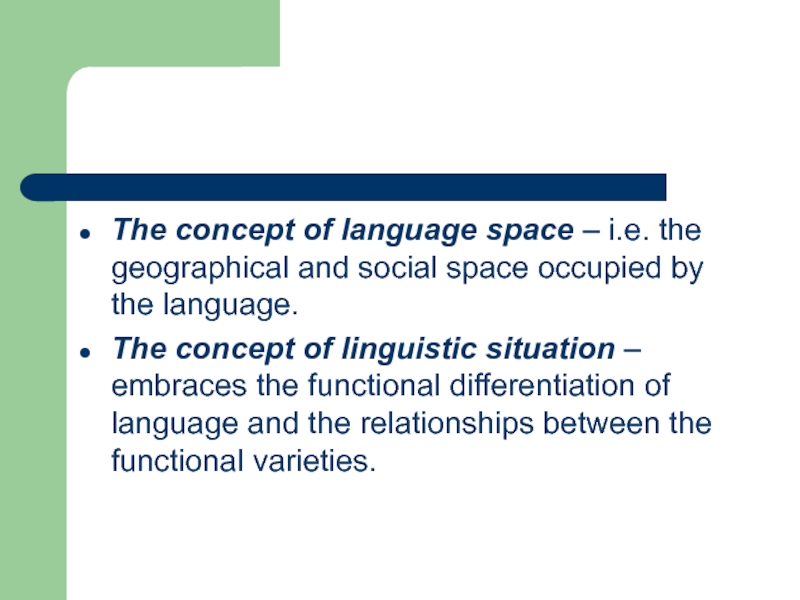
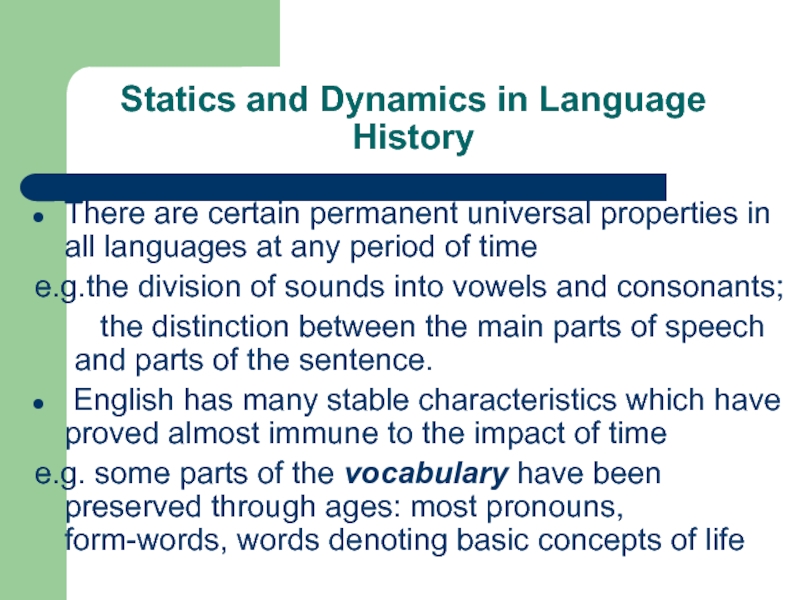


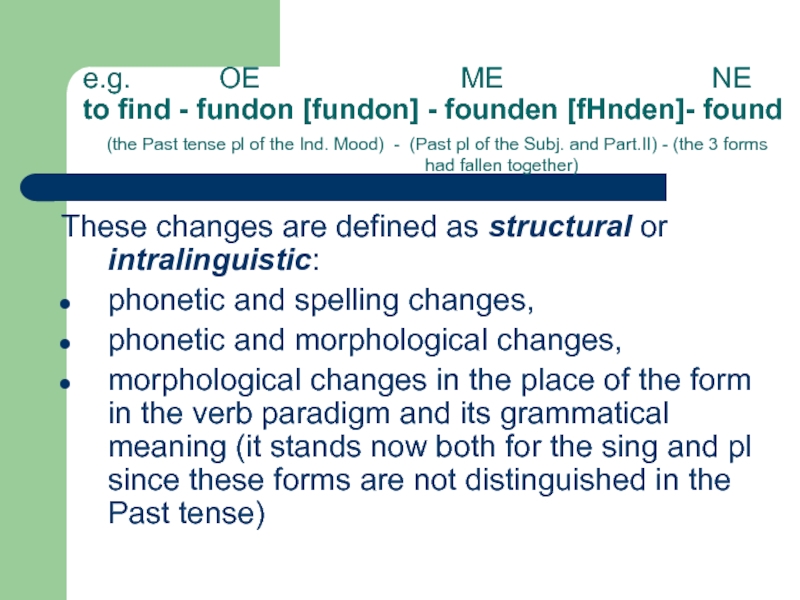
![THEORETICAL ASPECTS OF LANGUAGE HISTORY Replacements are linguistic changes, which involve some kind of substitution. Types Replacements are linguistic changes, which involve some kind of substitution. Types of replacements One-to-one replacement but [u]](/img/thumbs/0ccb275fb405b5f3f21f36367d9d0107-800x.jpg)
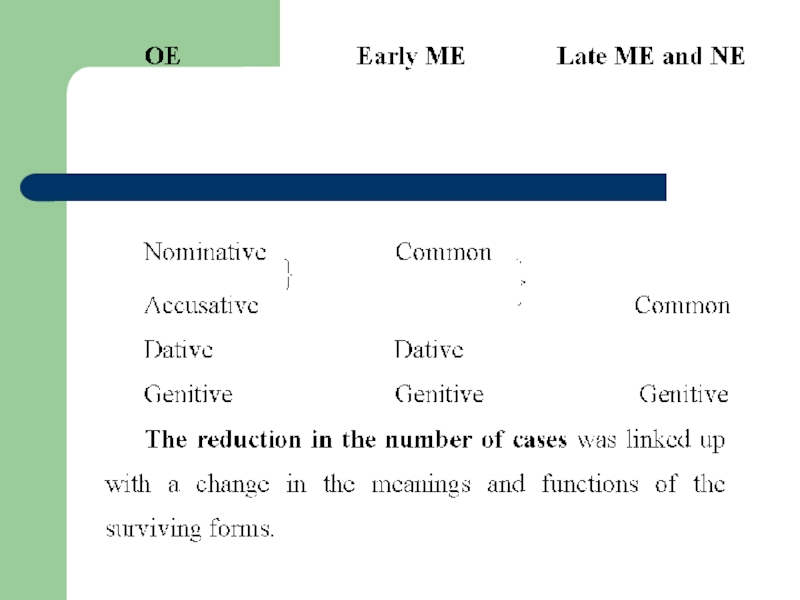
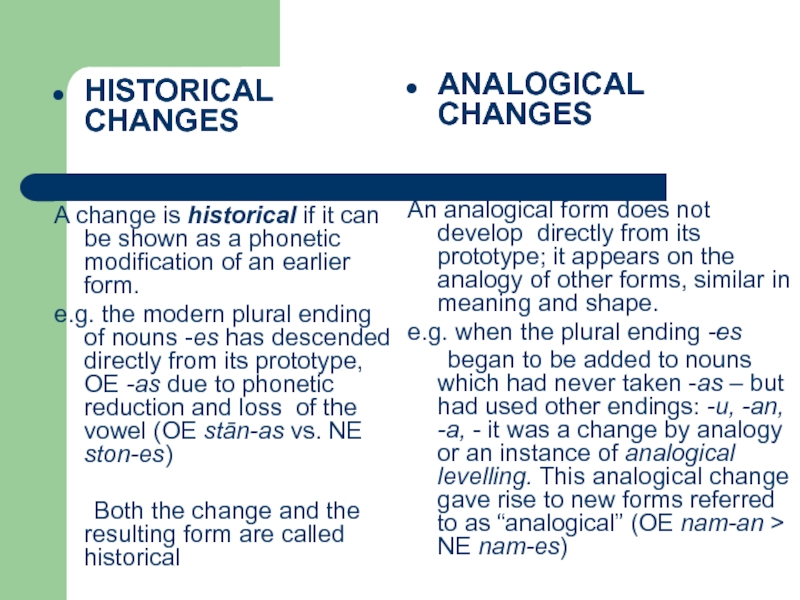

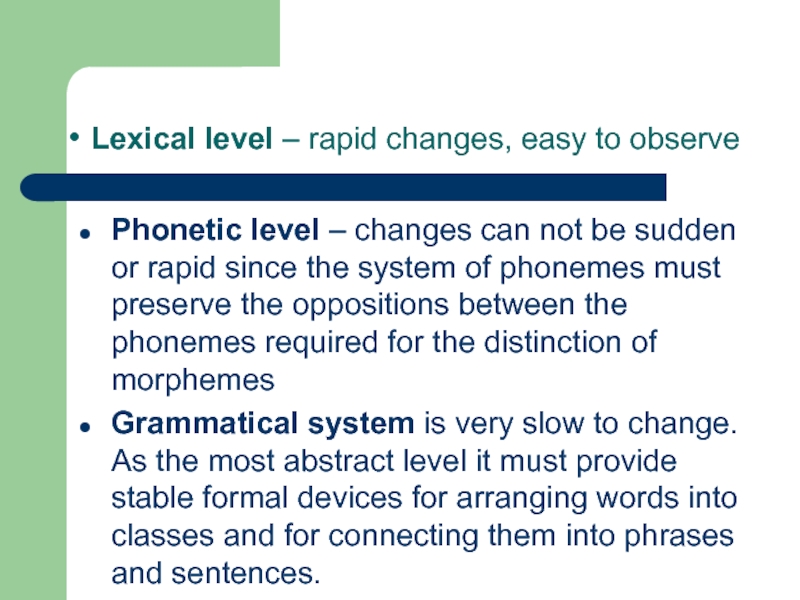
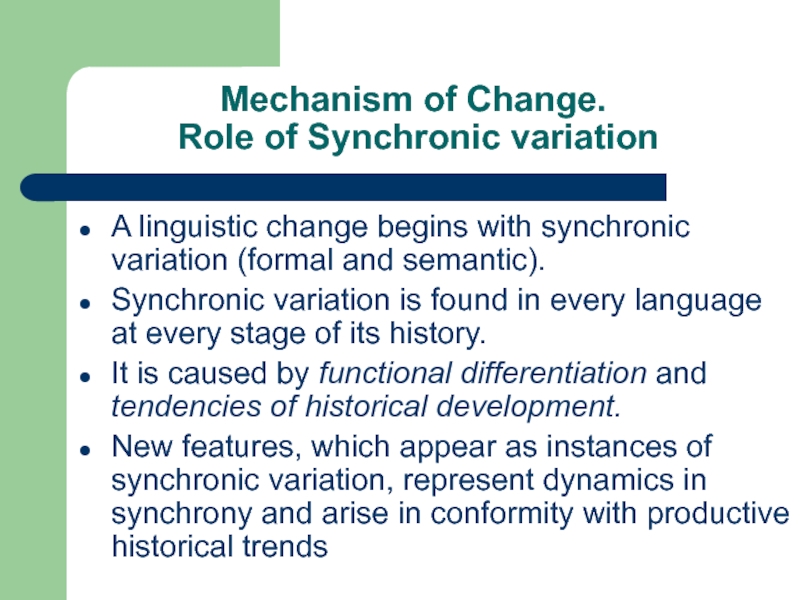
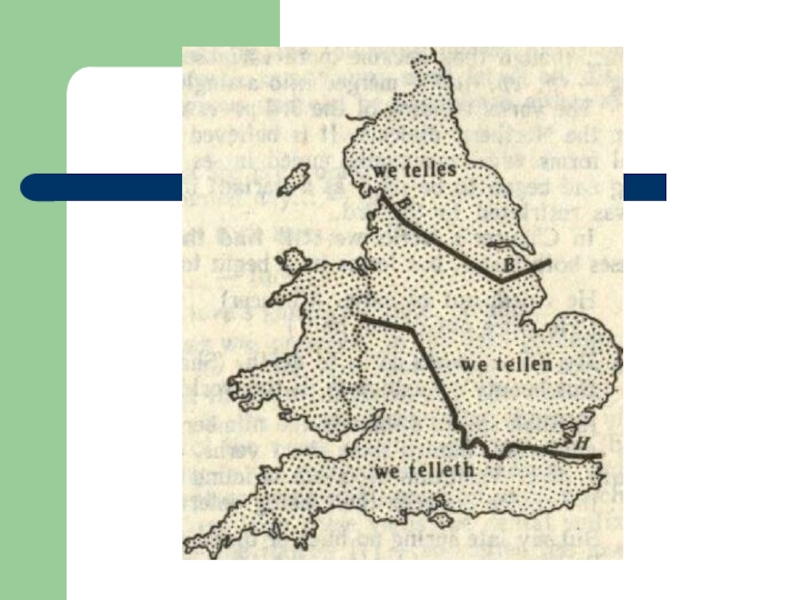
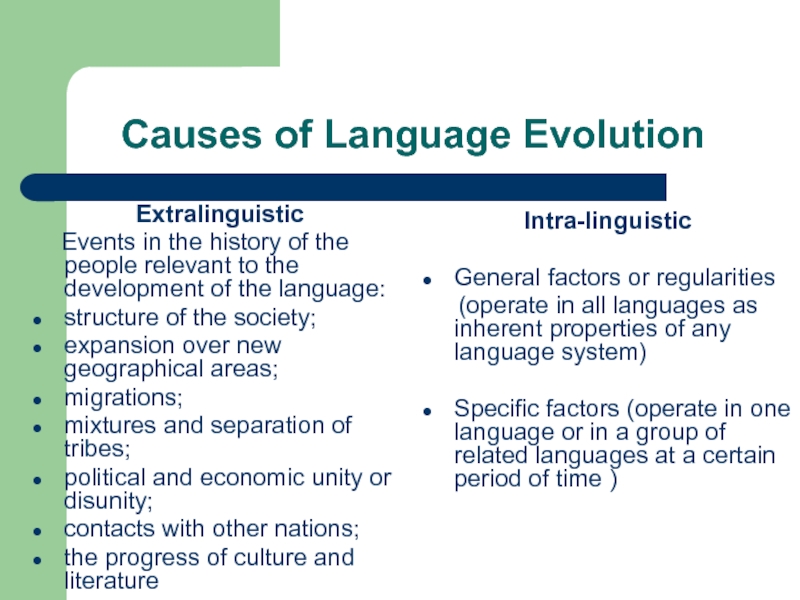
![THEORETICAL ASPECTS OF LANGUAGE HISTORY General factors or regularities assimilative and simplifying phonetic changes [kn] > General factors or regularities assimilative and simplifying phonetic changes [kn] > [n] in know, knee](/img/tmb/3/227385/bf512d8305a9d67fffb4fe9bfb1174a4-800x.jpg)
